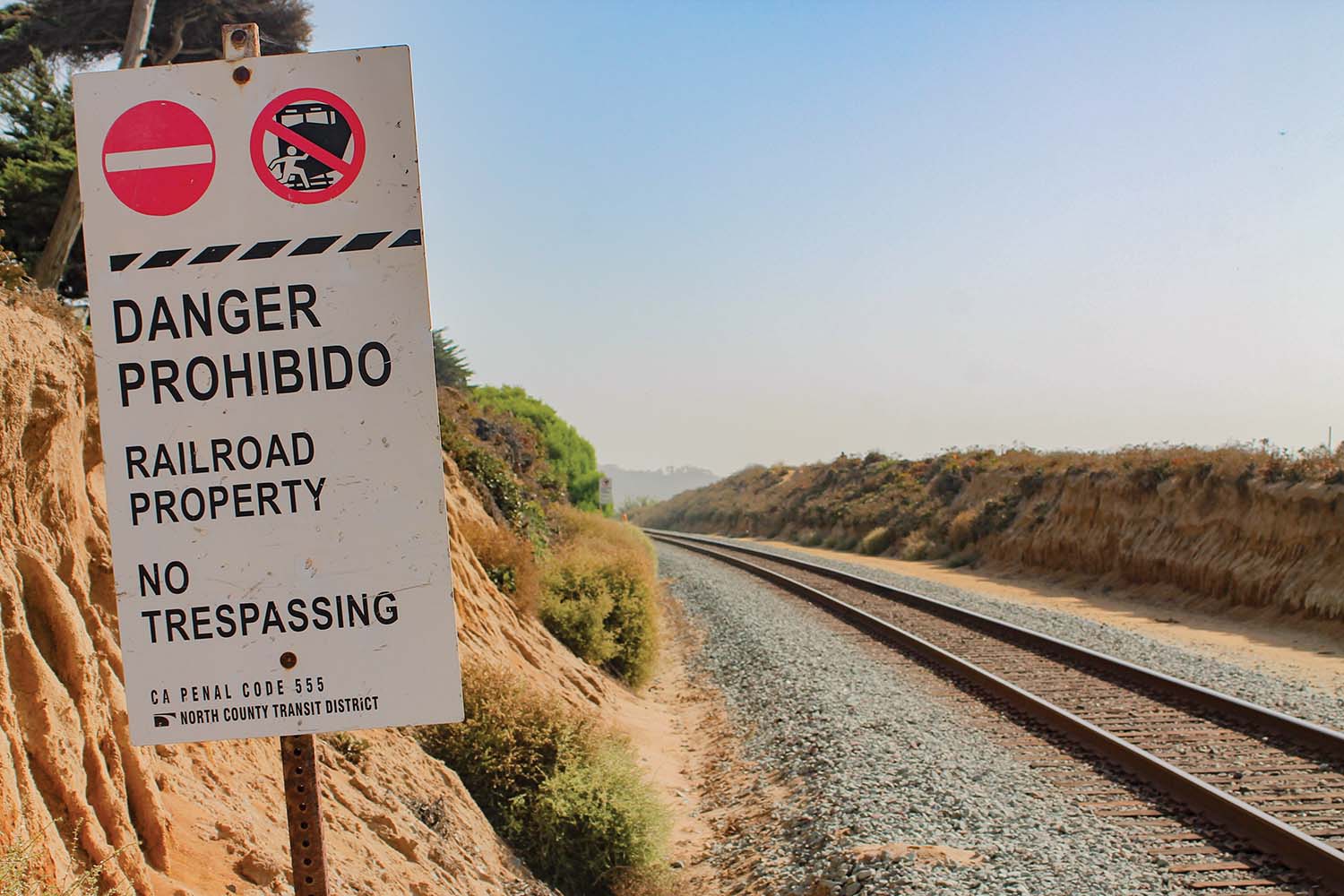DEL MAR — The City of Del Mar has asked the North County Transit District (NCTD) to consider alternatives to installing fencing along blufftop railroad tracks, which pedestrians have long crossed illegally, sometimes resulting in fatalities.
The Del Mar City Council will consider adopting a formal policy stance on the matter at its Nov. 9 meeting.
Residents and others frequently walk over the tracks, which carry commuters and freight, as a shortcut from residential cul-de-sacs to seaside bluffs and the beach, despite posted no-trespassing signs.
NCTD plans to build a “safety fence” in order “to deter the large number of trespassers, to protect the public from the self-evident dangers,” according to an Aug. 28 legal action NCTD filed with the Surface Transportation Board, a federal agency. “In Del Mar alone, there have been 8 fatalities and 14 incidents from 2014 to the present.”
Moreover, “constant trespassing on the bluffs contributes to erosion” and “trespassers lead to potential liability and/or financial risks to NCTD and taxpayers.”
In its filing, NCTD seeks preemptive federal authorization to streamline maintenance and so-called bluff stabilization projects, by exempting those projects from certain “incredibly onerous” local and state review processes.
Stabilization projects, which NCTD undertakes with SANDAG, another regional agency, include drainage, concrete pilings and retaining walls.

NCTD’s filing followed an April 21 letter from the City of Del Mar to the California Coastal Commission, in which Del Mar complained that certain emergency stabilization measures haven’t included sufficient “mitigation for impacts to aesthetics.” The city asked the Commission to ensure “ample community meetings” and “a full Federal Consistency Review process” prior to “any future bluff stabilization project.”
“NCTD justifiably is concerned that a similar … challenge to this fencing project is forthcoming,” according to the filing. “Railroads … have a reasonable expectation of operating on their property without the presence or interference of unauthorized people.”
NCTD outlined a variety of measures to stem trespassing in an Oct. 9 study, ranging from a 6-foot chain link fence to pole-mounted cameras, lights and speakers. The fence would cost an estimated $2 million.
Del Mar “was afforded minimal to no inclusion” in undertaking the study, City Manager C.J. Johnson said in an Oct. 23 letter. She asked about alternatives, including legal “safe crossings.”

For instance, San Clemente installed fencing to channel pedestrians to designated track crossings with gates that block passage only when a train passes by, Councilman Dwight Worden told The Coast News.
“Installing new crossings is largely outside the purview of NCTD,” according to NCTD’s study. “The [transit] district remains supportive … should the city identify project locations and funding to implement these city improvements.”
Councilmembers offered differing diagnoses and outlooks.
Councilwoman Sherryl Parks: “Residents’ point of view: ‘We’ve always used the tracks. … A safe crossing, no, not for me. I would have to go way out of my way to get to the new location for that crossing and it just isn’t fair.’”
Worden: “For 100 years folks have walked across the Del Mar Bluffs to get to the beach. … There is a safety problem. … But, it is not clear to me that the fencing … proposes the best way to address it. … There are options other than fencing that need to be considered.”
Councilwoman Terry Gaasterland: “The fatalities and incidents are clustered in one short segment,” near the existing Coast Blvd. crossing. “A more targeted and limited fencing project, enforcement … and upgrades” at that location would better address the problem.
Mayor Ellie Haviland: “We need to stop dangerous behavior while providing as much access as possible. This will likely include fencing if it is proven that fencing is safe and effective. Removing that critical rail corridor from the unstable bluffs is the only viable long-term solution.”
SANDAG is studying options to move the tracks inland, to a tunnel beneath or around the city.
But such an undertaking wouldn’t happen anytime soon. The current stabilization measures are intended to last at least 30 years and, “with ongoing stabilization measures,” could last beyond 50 years, SANDAG said in a statement.
A tunnel would cost as much as $3.5 billion, and currently lacks an identified funding source.



